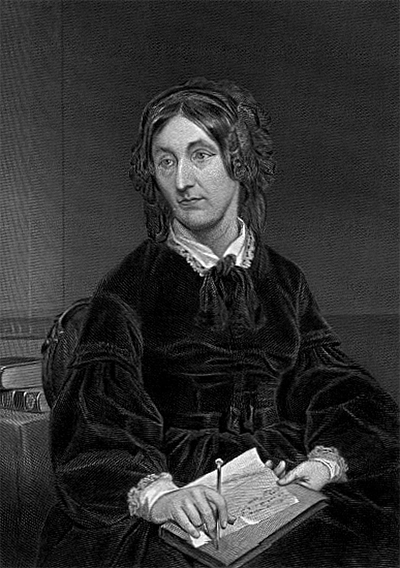Mary Somerville
Mary Fairfax Somerville was a Scottish mathematician and science writer born in Jedburgh in Scotland in 1780. She studied mathematics and astronomy, was jointly the first female member of the Royal Astronomical Society and was a prominent supporter of women's rights.
Queen of 19th Century science

As was very typical of the education of young women at the time of her birth, Mary Somerville received her first schooling at age 10 when she spent a year at the Musselburgh boarding school learning to read and write, and a little French.
Aged 13 she learnt her first maths when briefly enrolled in a school in Edinburgh. At about the same time she began to study algebra after seeing some strange symbols in a women's magazine, she read books on the subject. Her family saw little point in her studies, thinking they would do more harm than good.
She married her cousin, Captain Samuel Greig of the Russian Navy in 1804 and they had 2 sons. Tragically her husband died after only 3 years of marriage. Widowed and with a comfortable inheritance she was no longer controlled by her parents or husband – she was free to study how she wished.
She remarried in 1812 to another cousin, Dr. William Somerville, a British surgeon who was supportive of Mary's studies. In 1825 she began experimenting with magnetism, and the following year her technical paper, ‘The magnetic properties of the violet rays of the solar spectrum' was the first paper written by a women to be read to and published by the Royal Society.
In 1827 she was asked to translate Laplace's book ‘Mécanique Céleste. She did more than just translate it however, she explained in great detail Laplace's mathematics, and her popularized version entitled ‘The mechanism of the heavens' became a great success and made her famous.
She published her second book in 1834, ‘The connection of the Physical Sciences' and the following year, she and the famous Astronomer Caroline Herschel were the first women to be elected to the Royal Astronomical Society. She was awarded a pension of £200 a year by the King of England.
In 1848, aged 68, Mary published her most important book, ‘Physical Geography'. It was used in schools and universities until the beginning of the 20th Century. She continued to read algebra books and solve problems until her death aged 92.